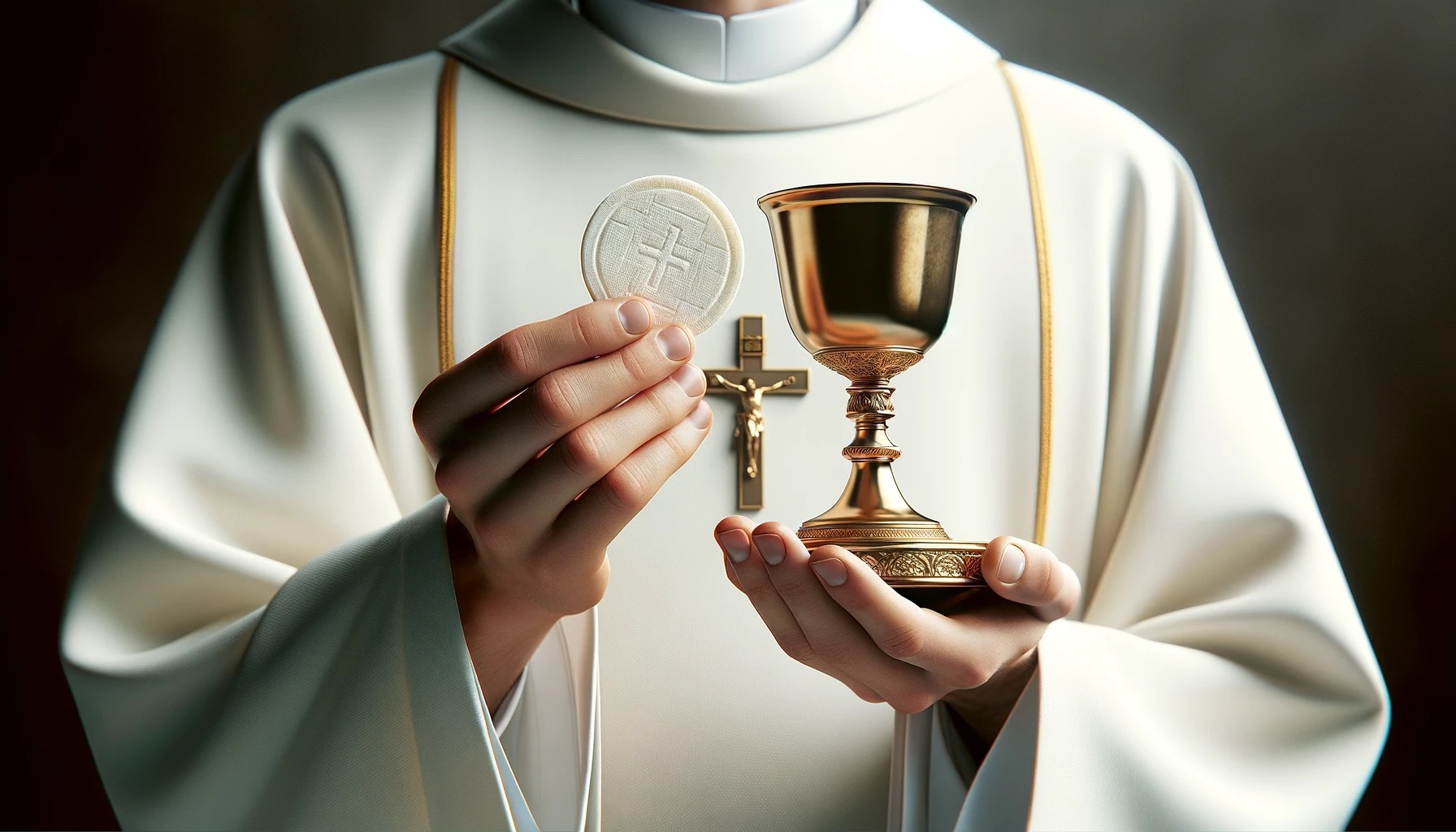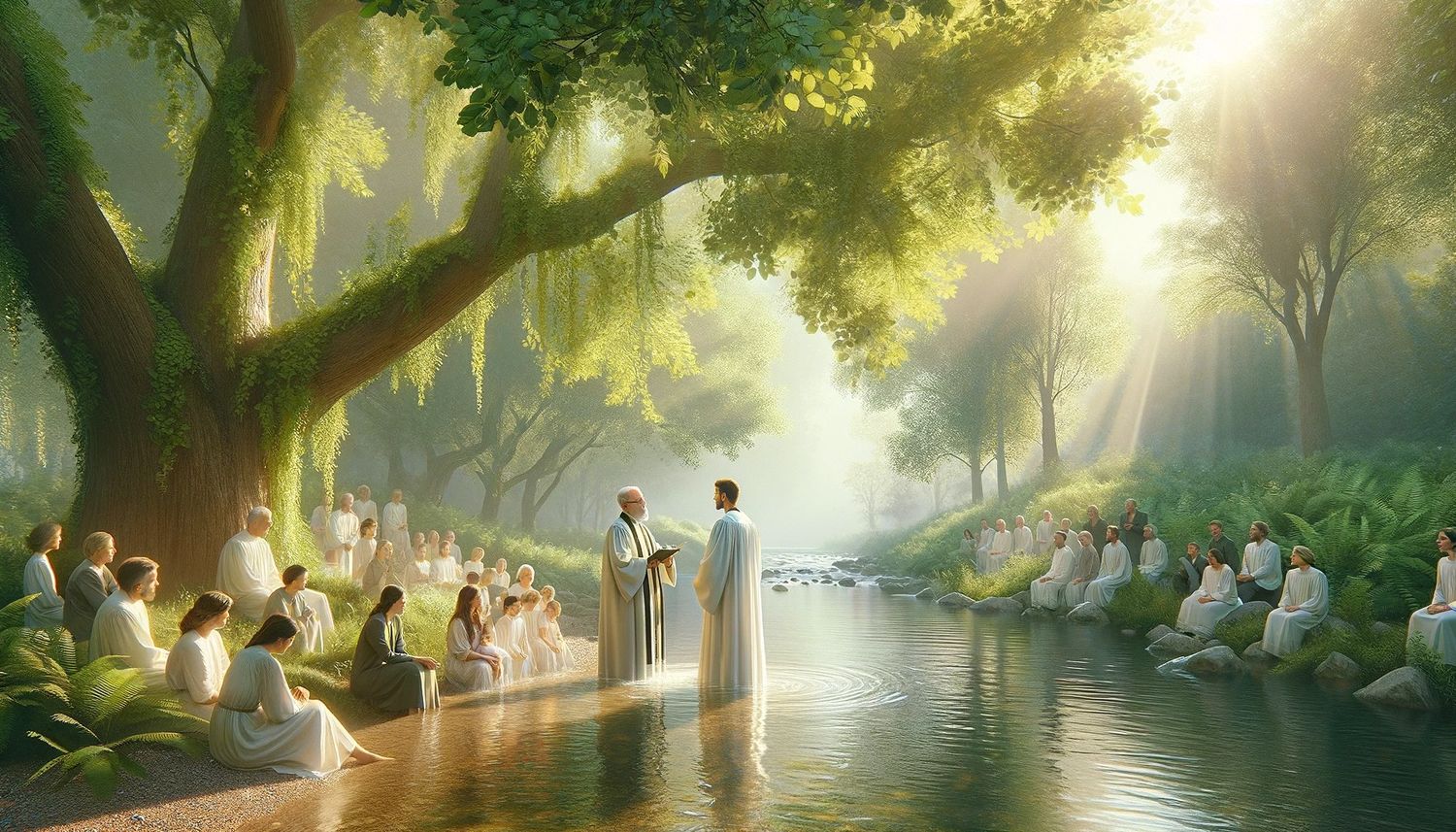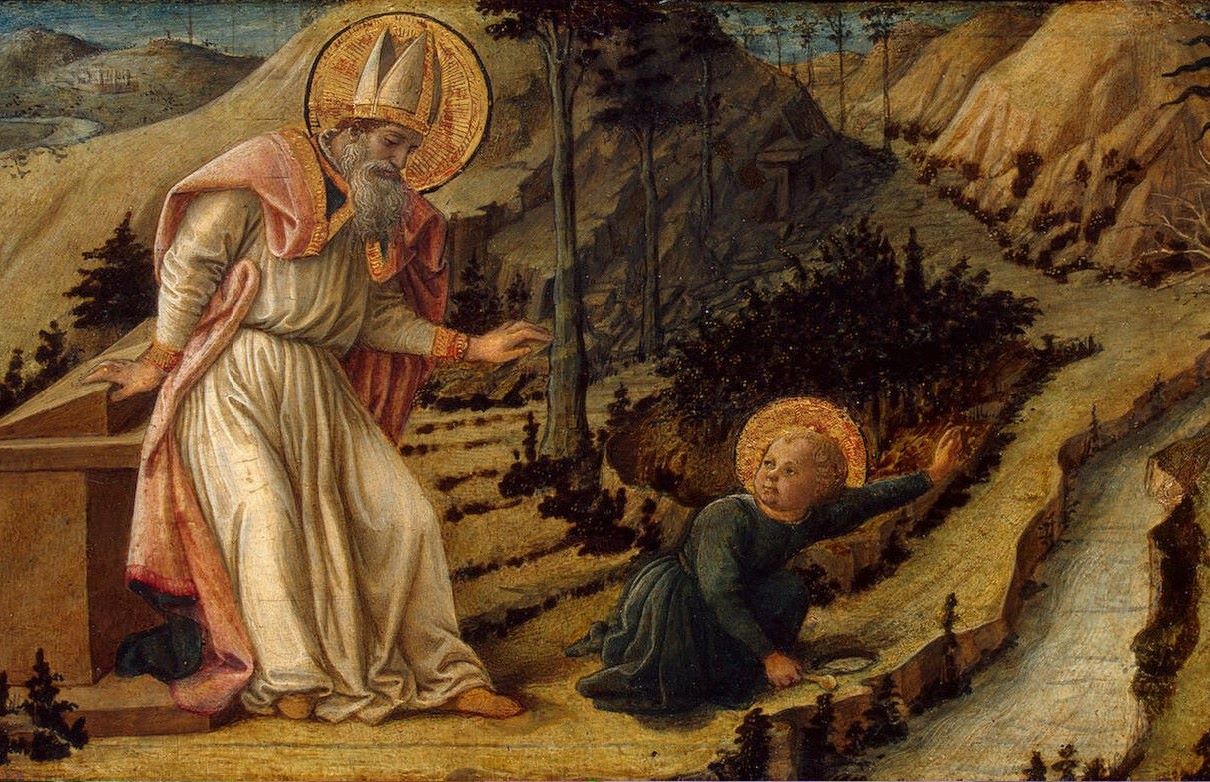Home>Arts and Culture>What Happened To Calvary Chapel


Arts and Culture
What Happened To Calvary Chapel
Published: March 4, 2024
Peter Smith, Editorial Director at Christian.net, combines deep insights into faith, politics, and culture to lead content creation that resonates widely. Awarded for his contributions to religious discourse, he previously headed a major organization for religious communicators, enhancing dialogue on faith's societal impacts.
Discover the evolution of Calvary Chapel and its impact on arts and culture. Explore what happened to Calvary Chapel and its influence on the arts and culture scene.
(Many of the links in this article redirect to a specific reviewed product. Your purchase of these products through affiliate links helps to generate commission for Christian.net, at no extra cost. Learn more)
Table of Contents
The Origins of Calvary Chapel
Calvary Chapel was founded in the late 1960s by Pastor Chuck Smith in Southern California. It emerged during a time of cultural and social upheaval, and its growth mirrored the countercultural movement of the era. Pastor Chuck Smith's approach to ministry was characterized by a strong emphasis on expository preaching and a casual, welcoming atmosphere that resonated with the youth culture of the time. The church's commitment to teaching the Bible verse by verse, chapter by chapter, and book by book set it apart from many other churches of the period. This approach attracted a diverse group of individuals, including hippies, surfers, and young people disillusioned with traditional forms of religion. The early years of Calvary Chapel were marked by a spirit of openness, authenticity, and a desire to reach those who felt marginalized by mainstream society. This unique blend of biblical teaching and cultural relevance laid the foundation for the rapid expansion and influence of Calvary Chapel in the years to come.
Read more: Who Started Calvary Chapel Churches
The Growth and Influence of Calvary Chapel
-
Expansion Beyond California: Calvary Chapel's impact extended far beyond Southern California, as the church's commitment to teaching the Bible and its informal style of worship resonated with people across the United States. As a result, numerous Calvary Chapel-affiliated churches were established in various states, contributing to the movement's rapid growth and influence.
-
Innovative Use of Media: Pastor Chuck Smith and Calvary Chapel were early adopters of radio and later television, utilizing these mediums to broadcast Pastor Chuck's expository preaching. This innovative approach significantly expanded the church's reach, allowing its message to permeate homes across the nation and even internationally.
-
Musical Influence: The emergence of contemporary Christian music was also influenced by Calvary Chapel, with the church providing a platform for musicians and bands to share their faith through music. This musical influence further contributed to the church's appeal, especially among the younger demographic.
-
Missionary Work: Calvary Chapel's influence was not confined to the United States, as the church actively engaged in missionary work, establishing a global presence. This missionary outreach played a significant role in spreading the teachings and ethos of Calvary Chapel to diverse cultures and communities worldwide.
-
Impact on Evangelicalism: The growth and influence of Calvary Chapel had a notable impact on evangelicalism, shaping the movement's trajectory and contributing to the broader cultural and religious landscape of the late 20th century. The church's emphasis on biblical teaching, contemporary worship, and outreach strategies left an indelible mark on the evangelical community, influencing the practices and approaches of numerous churches and denominations.
-
Cultural Relevance: Calvary Chapel's ability to adapt to the cultural context of the time, while remaining steadfast in its biblical foundation, allowed it to resonate with a generation seeking authenticity and spiritual meaning. This cultural relevance played a pivotal role in the church's growth and enduring influence, positioning it as a significant force within contemporary Christianity.
The growth and influence of Calvary Chapel during this period were characterized by a combination of innovative outreach, cultural resonance, and a steadfast commitment to biblical teaching, establishing it as a prominent and influential presence within the broader Christian landscape.
Leadership Changes and Controversies
-
Transition from Chuck Smith: Following the passing of Pastor Chuck Smith in 2013, Calvary Chapel faced a significant leadership transition. The absence of its influential founder brought about a period of adjustment and reevaluation, as the church navigated the complexities of succession and the challenges of maintaining its distinctive identity without its revered leader at the helm.
-
Doctrinal Disputes and Fragmentation: The post-Chuck Smith era witnessed doctrinal disputes and internal divisions within the Calvary Chapel movement. These disagreements centered on theological interpretations, church governance, and the extent of autonomy granted to individual Calvary Chapel congregations. Such controversies led to fractures within the movement, resulting in the formation of various networks and affiliations, each espousing differing perspectives on doctrine and ecclesiastical authority.
-
Legal Battles and Organizational Tensions: Calvary Chapel also found itself embroiled in legal battles and organizational tensions, particularly concerning issues of control, property rights, and the distribution of resources. These conflicts underscored the complexities inherent in managing a decentralized network of churches and highlighted the challenges of maintaining unity amidst divergent viewpoints and competing interests.
-
Leadership Succession Challenges: The process of appointing new leaders at the local church level, as well as within the broader Calvary Chapel network, presented its own set of challenges. Navigating the transition from founding pastors to new leadership structures tested the resilience and adaptability of individual congregations, as well as the overarching Calvary Chapel organization.
-
Impact on Identity and Mission: The leadership changes and controversies within Calvary Chapel raised fundamental questions about the movement's identity and mission. As the movement grappled with internal discord and external pressures, it faced the imperative of reaffirming its core values, theological distinctives, and overarching purpose in a rapidly evolving religious landscape.
-
Navigating Change and Restoration: Amidst the turbulence of leadership changes and controversies, Calvary Chapel sought to navigate the complexities of change while endeavoring to restore unity and cohesion within its ranks. This process involved dialogue, reconciliation efforts, and a recommitment to the foundational principles that had initially propelled the movement to prominence.
The period of leadership changes and controversies within Calvary Chapel marked a challenging chapter in its history, characterized by internal strife, legal disputes, and the need to redefine its organizational structure and theological boundaries. These developments significantly impacted the movement's trajectory and raised profound questions about its future direction and influence within contemporary Christianity.
Doctrinal Shifts and Divisions
The post-Chuck Smith era witnessed significant doctrinal shifts and divisions within the Calvary Chapel movement. These developments were rooted in differing interpretations of theological tenets, ecclesiastical practices, and the overall direction of the movement. The doctrinal shifts encompassed a range of theological issues, including perspectives on eschatology, ecclesiology, charismatic gifts, and the nature of church leadership. These theological nuances gave rise to divergent theological emphases and contributed to the formation of distinct theological camps within the Calvary Chapel network.
The doctrinal divisions within Calvary Chapel led to the emergence of various affiliations and networks, each espousing differing doctrinal positions and ecclesiastical practices. These divisions were not merely theoretical or abstract but had tangible implications for the governance, worship style, and mission emphasis of individual congregations. As a result, the movement experienced a degree of fragmentation, with affiliated churches aligning themselves with specific doctrinal orientations and theological emphases.
The doctrinal shifts and divisions also engendered robust theological discussions and debates within the Calvary Chapel community. These discussions centered on the interpretation of key biblical passages, the role of spiritual gifts in the contemporary church, and the nature of church leadership and governance. The diversity of perspectives within the movement prompted a reevaluation of doctrinal boundaries and theological distinctives, as well as the need for constructive dialogue and engagement across doctrinal divides.
The impact of doctrinal shifts and divisions extended beyond theological discourse, influencing the ethos and identity of individual Calvary Chapel congregations. The doctrinal orientations adopted by specific churches shaped their worship practices, teaching emphases, and engagement with broader Christian communities. These doctrinal differences also underscored the challenges of maintaining unity and cooperation within a decentralized movement characterized by diverse theological perspectives.
Navigating the doctrinal shifts and divisions within Calvary Chapel necessitated a careful balance between theological fidelity and organizational unity. The movement grappled with the tension between preserving its doctrinal heritage and accommodating diverse theological viewpoints within its ranks. This process involved efforts to foster mutual understanding, respect, and cooperation among churches with differing doctrinal persuasions, while also reaffirming the core theological convictions that had historically defined the movement.
The doctrinal shifts and divisions within Calvary Chapel constituted a significant chapter in the movement's history, prompting introspection, dialogue, and the need to articulate a coherent theological framework that could accommodate diverse perspectives while maintaining a sense of shared identity and mission. These developments continue to shape the trajectory and internal dynamics of the Calvary Chapel movement, reflecting the ongoing complexities of navigating doctrinal diversity within a decentralized and influential network of churches.
Current State and Future Outlook
The current state of Calvary Chapel reflects a movement in transition, grappling with the legacy of its founding era while navigating the complexities of a rapidly evolving religious landscape. The movement continues to encompass a diverse array of affiliated churches, each with its own distinct expressions of worship, teaching styles, and doctrinal emphases. While the influence of its charismatic founder, Pastor Chuck Smith, remains palpable, the movement has undergone significant shifts in leadership, doctrinal orientation, and organizational structure. These changes have engendered a degree of fragmentation and theological diversity within the Calvary Chapel network, presenting both challenges and opportunities for the movement's future trajectory.
Looking ahead, the future outlook for Calvary Chapel is marked by a need to reconcile its rich heritage with the imperative of adaptation and renewal. The movement faces the task of preserving its core values of expository teaching, contemporary worship, and outreach while engaging with the changing demographics and cultural dynamics of contemporary society. This necessitates a balance between honoring its historical roots and embracing innovative approaches to ministry, outreach, and discipleship. The movement's ability to navigate this tension will significantly shape its relevance and impact in the years to come.
Furthermore, the future of Calvary Chapel hinges on its capacity to address the doctrinal diversity and organizational tensions that have emerged within its ranks. The movement must engage in constructive dialogue, theological reflection, and collaborative efforts to foster unity and cooperation among its affiliated churches. This process involves reaffirming the foundational principles that bind the movement together while allowing for theological diversity within a shared framework of faith and mission. The movement's ability to navigate these internal dynamics will be pivotal in determining its cohesion and influence in the broader Christian landscape.
In addition, the future of Calvary Chapel is intricately linked to its engagement with contemporary cultural and social realities. The movement faces the challenge of remaining culturally relevant while upholding its biblical convictions and moral principles. This entails addressing pressing social issues, engaging with diverse communities, and demonstrating a commitment to compassion, justice, and holistic ministry. By embracing a posture of cultural engagement and relevance, Calvary Chapel can position itself as a vital and transformative presence within the contemporary religious milieu.
Ultimately, the future outlook for Calvary Chapel is characterized by both challenges and opportunities. The movement's ability to navigate leadership transitions, doctrinal diversity, cultural relevance, and organizational coherence will shape its trajectory and impact in the years ahead. As Calvary Chapel continues to evolve, it remains poised to contribute to the vibrancy and diversity of contemporary Christianity, offering a distinct expression of faith that resonates with a new generation while remaining rooted in its historical legacy.















